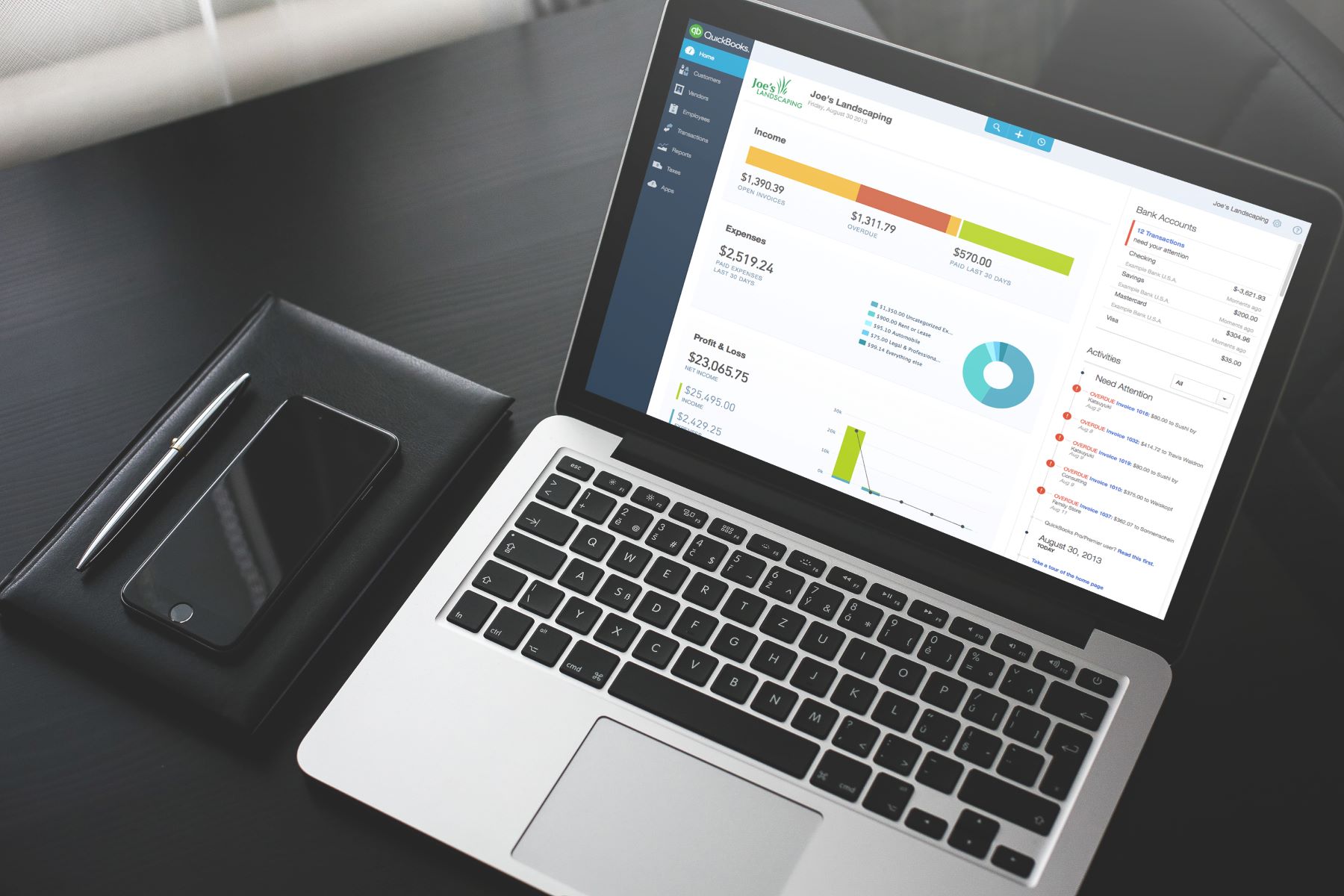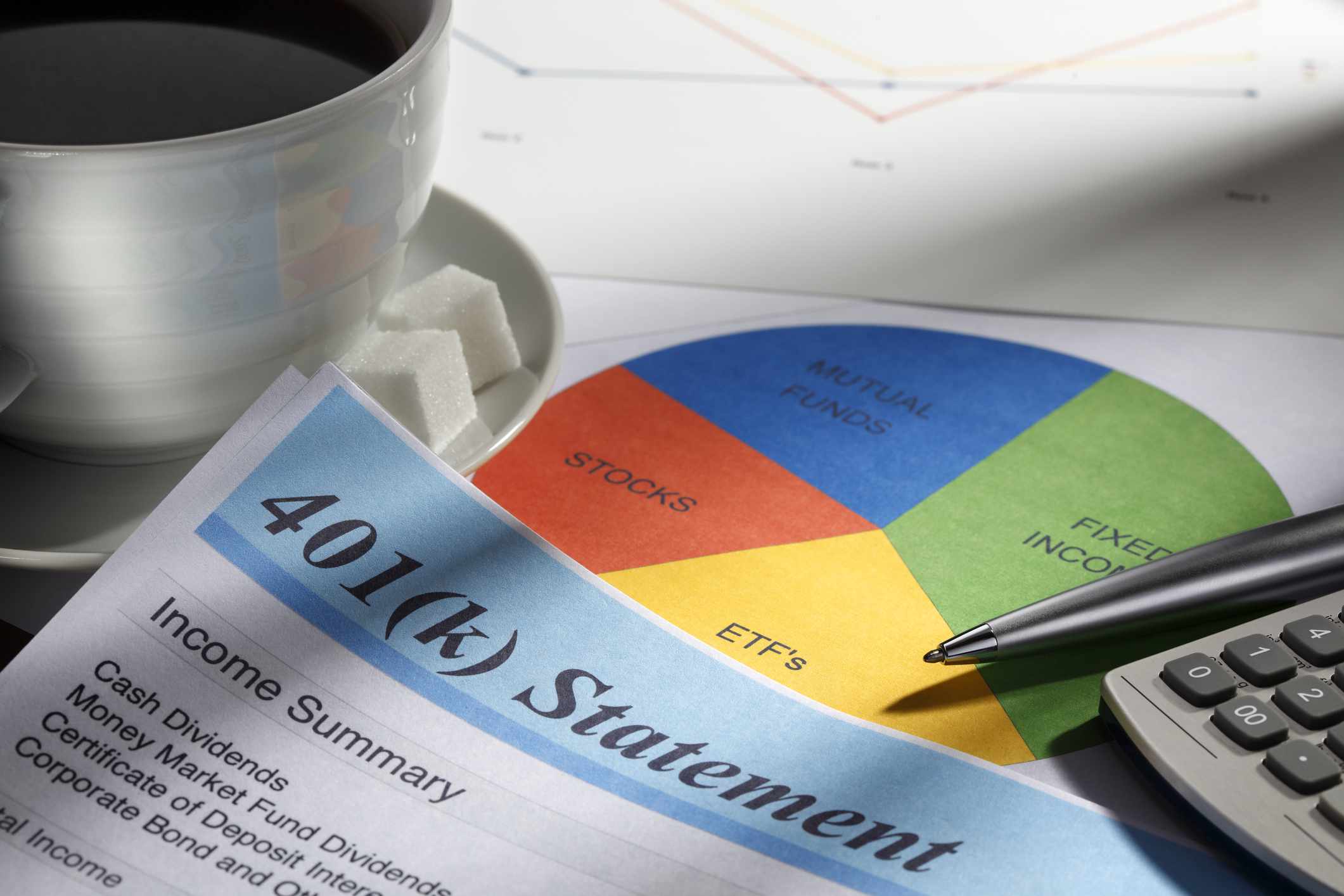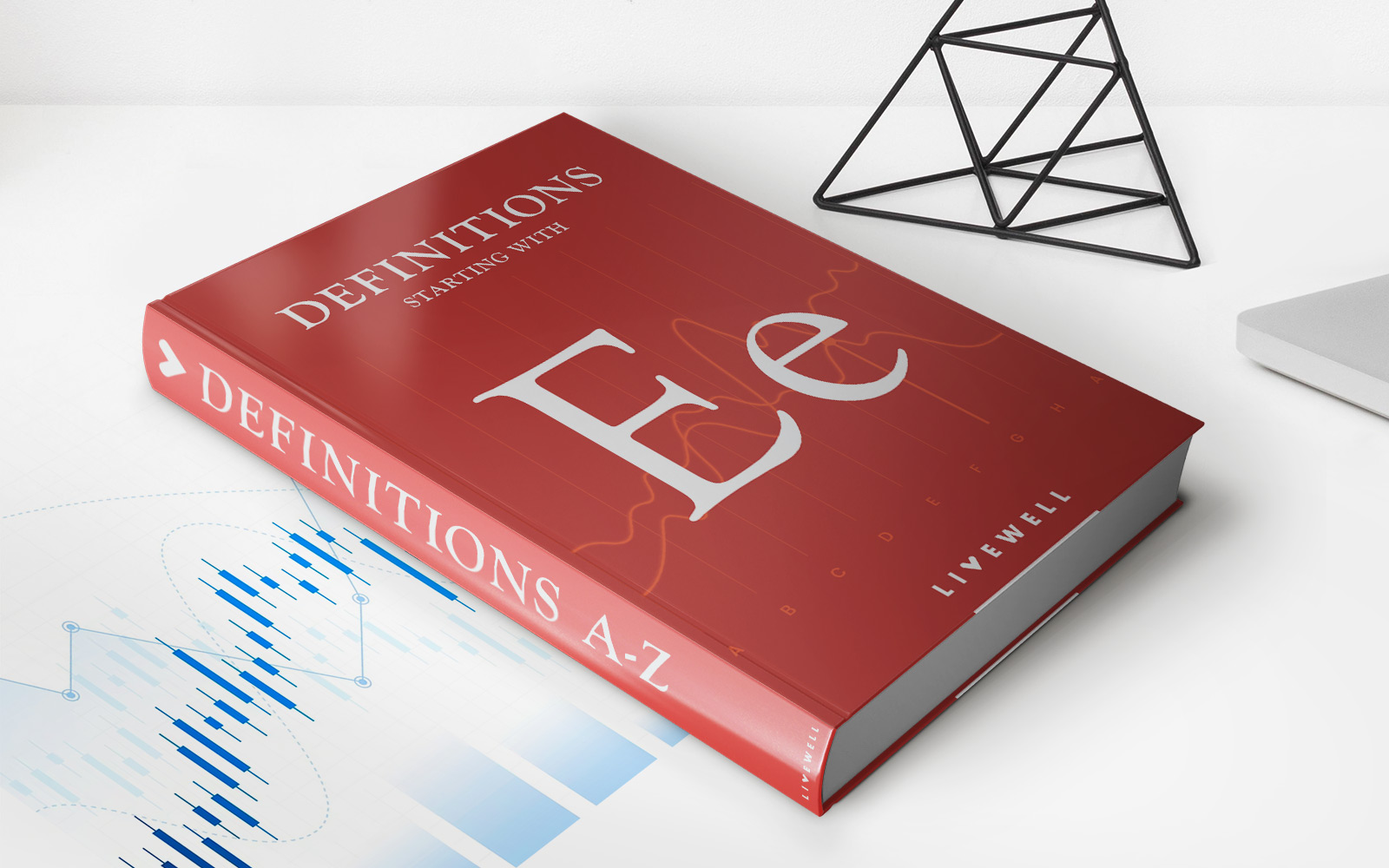

Finance
Who Manages 401K
Modified: December 30, 2023
Learn about the importance of managing your 401K for your financial future. Discover the benefits and strategies to effectively handle your finances.
(Many of the links in this article redirect to a specific reviewed product. Your purchase of these products through affiliate links helps to generate commission for LiveWell, at no extra cost. Learn more)
Table of Contents
Introduction
When it comes to planning for retirement, you’ve likely heard of the term “401K.” But do you know who manages this critical retirement savings plan? It’s essential to understand the different players involved in the management of a 401K to ensure that your hard-earned money is in good hands.
A 401K is a tax-advantaged retirement savings plan offered by employers to their employees. It allows employees to contribute a portion of their salary on a pre-tax basis, with the option for employers to match a percentage of these contributions. The accumulated savings in a 401K account can then be invested in various financial instruments to grow over time.
Managing a 401K involves several key parties, each with a specific role and responsibility. These include the employer, the employee, third-party administrators (TPAs), investment advisors and financial planners, recordkeepers, custodians, and even robo-advisors.
In this article, we will delve into the different players involved in the management of a 401K plan and examine their respective roles and contributions. By understanding who manages your 401K, you can make informed decisions about your retirement savings and ensure a secure financial future.
What is a 401K?
A 401K is a retirement savings plan that allows employees to set aside a portion of their pre-tax income for the purpose of saving for retirement. It is named after the section of the U.S. Internal Revenue Code that governs it.
Unlike traditional pension plans, where the employer takes on the responsibility of managing the retirement funds, 401K plans empower employees to be more actively involved in their retirement savings. Employees can contribute a percentage of their salary to the plan, often with the added benefit of an employer match.
The contributions made to a 401K are deducted from the employee’s paycheck before income taxes are applied. This has the advantage of reducing the employee’s taxable income for the year. The earnings on the investments made within the 401K account are also tax-deferred, meaning they are not subject to capital gains tax until withdrawn in retirement.
401K plans typically offer a variety of investment options, such as mutual funds, stocks, bonds, and target-date funds. Employees can choose how to allocate their contributions among these options based on their risk tolerance and investment goals.
One of the key benefits of a 401K is the potential for employer matching contributions. Many employers offer a matching contribution up to a certain percentage of the employee’s salary. For example, an employer might match 50% of an employee’s contributions up to 5% of their salary. This is essentially free money and can significantly boost the growth of an employee’s retirement savings over time.
Another advantage of a 401K is its portability. If an employee changes jobs, they have the option to roll over their 401K balance into an Individual Retirement Account (IRA) or their new employer’s 401K plan. This ensures that the funds can continue to grow tax-deferred and remain dedicated to their retirement savings.
In summary, a 401K is a retirement savings plan that allows employees to contribute a portion of their pre-tax income, invest it for growth, and enjoy tax advantages. The ability to receive employer matching contributions and the flexibility to transfer funds make it an attractive option for building a secure financial future.
Benefits of a 401K
Participating in a 401K retirement savings plan offers numerous benefits that can significantly impact your financial future. Here are some key advantages of having a 401K:
- Tax Advantages: One of the primary benefits of a 401K is the tax advantages it provides. Contributions made to a traditional 401K are made on a pre-tax basis, reducing your taxable income for the year. Additionally, the earnings on your investments grow tax-deferred until retirement, allowing your savings to compound over time.
- Employer Matching Contributions: Many employers offer a matching contribution to employees’ 401K accounts. This means that for every dollar you contribute, your employer will contribute a certain percentage, up to a specified limit. Employer matching is essentially free money that can significantly boost your retirement savings.
- Retirement Savings Automation: A 401K allows for automatic payroll deductions, making it easy to consistently contribute to your retirement savings. This automation helps establish a disciplined savings habit and ensures that you consistently set aside money for your future.
- Investment Options: 401K plans typically offer a variety of investment options to suit different risk tolerances and investment preferences. These options may include mutual funds, stocks, bonds, and target-date funds. Having access to a diverse range of investment choices allows you to customize your portfolio based on your individual goals and preferences.
- Portability: If you change jobs, you have the option to roll over your 401K balance into an Individual Retirement Account (IRA) or transfer it to your new employer’s 401K plan. This offers flexibility and ensures that your retirement savings remain intact and continue to grow tax-deferred.
- Asset Protection: In some cases, 401K funds are protected from creditors. This means that in the event of bankruptcy or other financial challenges, your retirement savings may be safeguarded.
- Long-Term Savings Growth: Perhaps the most significant benefit of a 401K is the potential for long-term savings growth. By consistently contributing to your account and taking advantage of employer matching contributions, your retirement funds have the opportunity to compound over time, potentially resulting in a substantial nest egg for your retirement years.
Overall, a 401K provides individuals with a powerful tool for saving for retirement. The tax advantages, employer contributions, automation, investment options, and long-term growth potential make it an invaluable vehicle for building a secure financial future.
Overview of 401K Management
Managing a 401K plan involves various parties working together to ensure the smooth operation and growth of the retirement savings. Let’s take a closer look at the key players involved in 401K management:
- Employer: The employer sponsors the 401K plan and plays a crucial role in its management. They have the responsibility of selecting and partnering with the necessary service providers, determining the plan’s structure, and establishing any company-specific rules or guidelines for employee participation. Employers also have the option to provide matching contributions to their employees’ 401K accounts, which further encourages participation and savings.
- Employee: The employee is an active participant in 401K management. They contribute a portion of their pre-tax income to their 401K account based on their individual savings goals and risk tolerance. Employees are responsible for making investment decisions within the options offered by the plan and adjusting their contribution amounts as needed. They also have the flexibility to rollover their 401K funds if they change jobs.
- Third-Party Administrators (TPAs): TPAs are external entities hired by employers to handle administrative tasks related to the 401K plan. They ensure compliance with legal and regulatory requirements, facilitate participant enrollment and contribution processing, conduct annual testing to ensure plan eligibility and nondiscrimination, and prepare necessary reports and filings.
- Investment Advisors and Financial Planners: Employers often engage investment advisors or financial planners to assist employees in making informed investment decisions within their 401K plans. These professionals offer guidance on asset allocation, portfolio diversification, risk management, and long-term financial planning. They help employees navigate the investment options and make suitable choices based on individual goals and risk tolerance.
- Recordkeepers: Recordkeepers are responsible for the day-to-day recordkeeping and administration of 401K accounts. They maintain individual participant records, process contributions, ensure accurate investment allocation, calculate vested balances, and provide participant statements. Recordkeepers also provide online access for employees to monitor and manage their 401K accounts.
- Custodians: Custodians hold the assets within the 401K plan, such as stocks, bonds, and mutual funds, on behalf of the participants. They ensure the safekeeping of the investments and handle transactions, such as purchases, sales, and exchanges, as directed by participants or investment managers.
- Robo-Advisors: In recent years, technology-driven robo-advisors have emerged as an alternative option for 401K management. These automated platforms use algorithms to provide investment advice and portfolio management services to participants. Robo-advisors offer low-cost investment options and personalized recommendations based on participants’ financial goals and risk tolerance.
By collaborating with these key players, the 401K plan is effectively managed, ensuring compliance, efficient administration, appropriate investment options, and participant support. This collective effort helps employees maximize their retirement savings and work towards a financially secure future.
Employer’s Role in 401K Management
The employer plays a crucial role in the management of a 401K plan. Their responsibilities encompass various aspects, including plan selection, partnering with service providers, adherence to legal requirements, and employee education. Let’s explore the employer’s role in 401K management:
- Plan Sponsorship: As the plan sponsor, the employer initiates and sponsors the 401K plan to provide retirement savings benefits to its employees. The employer must ensure that the plan meets the requirements set forth by the Internal Revenue Service (IRS) and the Employee Retirement Income Security Act (ERISA).
- Plan Design: The employer has the responsibility of designing the 401K plan to suit the needs of the company and its employees. This includes determining eligibility criteria, vesting schedules, contribution limits, and any specific features or options offered, such as a Roth 401K or loan provisions.
- Service Provider Selection: Employers partner with third-party administrators (TPAs), investment advisors, recordkeepers, and custodians to assist in the management and administration of the 401K plan. It is important for the employer to thoroughly research and select reputable and experienced service providers that can efficiently handle the plan’s administrative tasks and provide quality support to both the employer and employees.
- Employee Communication and Education: Employers have a responsibility to educate and inform their employees about the 401K plan. This includes regularly communicating plan details, contribution options, investment choices, and any updates or changes to the plan. Employers may organize educational sessions or provide resources to help employees understand the importance of saving for retirement and make informed decisions regarding their contributions and investment allocations.
- Compliance and Fiduciary Duties: Employers must ensure that the 401K plan complies with all legal and regulatory requirements set by the IRS and ERISA. This includes conducting annual nondiscrimination testing, filing necessary forms and reports, and adhering to the plan’s fiduciary duties. Employers have a fiduciary duty to act solely in the best interests of the plan participants and beneficiaries, prudently managing the plan’s assets and selecting suitable investment options.
- Matching Contributions: Employers may choose to offer matching contributions to incentivize employee participation and encourage savings. They determine the matching formula (e.g., dollar-for-dollar or percentage-based) and the maximum limit, if any, for matching contributions. Employers contribute these funds to eligible employees’ 401K accounts as an additional benefit.
- Monitoring and Review: Employers have an ongoing responsibility to monitor the performance of the 401K plan, including the investment options offered, participant enrollment and contribution rates, and overall plan effectiveness. Regular reviews and assessments help identify any areas for improvement and ensure that the plan continues to meet the evolving needs of the employees.
By actively fulfilling their role in 401K management, employers contribute to the success and effectiveness of the plan. Their guidance and support help employees save for retirement and create a positive and secure financial future.
Employee’s Role in 401K Management
The success of a 401K plan relies heavily on active employee participation and engagement. While employers play a crucial role in managing the plan, employees also have important responsibilities to ensure the effective management of their 401K accounts. Here are some key aspects of the employee’s role in 401K management:
- Active Enrollment: Employees must actively enroll in their employer’s 401K plan. This involves completing the necessary enrollment forms and selecting their contribution rate. It is important for employees to take advantage of this opportunity as early as possible to maximize their potential savings and benefit from the power of compounding over time.
- Contributions: Employees are responsible for determining their contribution amount and allocating a portion of their pre-tax income to their 401K account. It is advisable to contribute at least enough to take full advantage of any employer matching contributions, as this is essentially free money that can significantly boost retirement savings.
- Investment Allocation: Employees have the responsibility of allocating their contributions among the available investment options offered within the 401K plan. This can involve selecting a diversified portfolio of stocks, bonds, mutual funds, or target-date funds based on individual risk tolerance and long-term goals. Regularly reviewing and rebalancing the investment allocation is important to ensure alignment with changing personal circumstances.
- Continuous Monitoring: While employers, recordkeepers, and custodians handle the day-to-day administration of the 401K plan, employees should actively monitor their account to stay informed about their savings progress. Regularly reviewing statements, monitoring investment performance, and making any necessary adjustments is essential to stay on track towards retirement goals.
- Financial Education and Professional Advice: Employees should take advantage of any resources or educational initiatives provided by their employer or investment advisors to enhance their financial knowledge. Understanding basic investment principles, retirement planning strategies, and the importance of diversification can empower employees to make informed decisions regarding their 401K management. Seeking professional advice when needed can also ensure that investment choices align with individual circumstances and goals.
- Employer Communication: Staying informed about any updates or changes to the 401K plan is crucial. Employees should actively engage in employer communication, such as reading company communications, attending informational sessions, and asking questions when needed. This helps employees stay up to date with plan provisions, contribution limits, and other relevant details.
- Long-Term Retirement Planning: While a 401K is an important component of retirement savings, employees should also consider other retirement planning strategies, such as establishing an emergency fund, contributing to an Individual Retirement Account (IRA), or exploring additional investment options. This holistic approach ensures a well-rounded retirement savings plan.
By actively fulfilling their role in 401K management, employees take control of their retirement savings journey. Through contributions, investment allocation, monitoring, and continued education, employees can work towards a financially secure future and enjoy the benefits of their 401K plan.
Third-Party Administrators (TPAs)
Third-Party Administrators (TPAs) play a vital role in the management and administration of 401K plans. They are external service providers hired by employers to handle various administrative tasks, ensuring compliance with legal and regulatory requirements. Let’s take a closer look at the role and responsibilities of TPAs in the context of 401K management:
Plan Administration: TPAs handle the day-to-day administrative tasks associated with managing a 401K plan. This includes enrolling new participants, processing contributions, and maintaining accurate participant records. They ensure that contributions are invested according to the participant’s investment allocation choices and provide regular statements detailing account activity and balances.
Compliance and Regulatory Compliance: TPAs are responsible for ensuring that the 401K plan remains in compliance with the strict regulations and requirements mandated by regulatory bodies such as the Internal Revenue Service (IRS) and the Department of Labor (DOL). This involves conducting annual testing to ensure the plan meets nondiscrimination requirements, adhering to fiduciary responsibilities, and filing necessary forms and reports in a timely manner.
Participant Education and Communication: TPAs often provide educational resources and support to plan participants. This includes answering participant inquiries regarding the plan, providing information on investment options, and assisting participants with understanding and navigating the administrative aspects of the plan. They may also organize educational sessions or provide online tools to help employees make informed decisions regarding their contributions and investments.
Recordkeeping and Reporting: TPAs maintain accurate participant records and track transactions within the 401K plan. They ensure that participants’ balances are correctly recorded, account for vesting schedules, and facilitate accurate participant statements. TPAs also assist employers in preparing the necessary reports and filings required by regulatory bodies, such as the Form 5500.
Assistance with Plan Design: TPAs can provide valuable insights and expertise during the initial design or restructuring of a 401K plan. They can assist employers in developing plan provisions, determining eligibility criteria, and advising on the selection of investment options and features that align with the company’s goals and the needs of its employees.
Technology Solutions: Many TPAs offer advanced technological solutions to streamline 401K administration. This may include providing access to online platforms where participants can view and manage their accounts, track investment performance, and make changes to their contribution amounts or investment allocations.
In summary, Third-Party Administrators (TPAs) are integral to the successful management and administration of 401K plans. By handling administrative tasks, ensuring regulatory compliance, educating participants, and providing technological solutions, TPAs support both employers and employees in effectively managing their retirement savings and ensuring a seamless and efficient 401K experience.
Investment Advisors and Financial Planners
Investment advisors and financial planners play a crucial role in assisting participants of 401K plans with making informed investment decisions and creating comprehensive retirement strategies. These professionals provide valuable guidance and expertise in managing retirement savings. Let’s explore the role and benefits of investment advisors and financial planners in the context of 401K management:
Investment Advice: Investment advisors and financial planners offer expert guidance on investment options available within the 401K plan. They provide insights into the performance, risks, and potential returns of different investment vehicles such as stocks, bonds, mutual funds, and target-date funds. Advisors help participants make informed decisions based on their risk tolerance, investment goals, and time horizon.
Asset Allocation: One of the key responsibilities of an investment advisor or financial planner is to assist participants in choosing an appropriate asset allocation strategy. They analyze factors such as age, risk tolerance, and retirement goals to recommend a diversified investment mix. This ensures that the portfolio is balanced and aligned with the participant’s risk tolerance and goals, reducing the potential impact of market fluctuations.
Retirement Income Planning: Investment advisors and financial planners help participants create comprehensive retirement income strategies. They analyze factors such as projected expenses, existing retirement savings, and other income sources to determine a suitable withdrawal strategy. This includes assessing options such as systematic withdrawals, annuities, and other income-generating vehicles to ensure participants can maintain a steady income throughout retirement.
Financial Education: Investment advisors and financial planners provide educational resources and personalized guidance to help participants understand complex financial concepts. They offer workshops, webinars, and one-on-one consultations to educate participants about retirement planning, investment principles, and strategies for maximizing their 401K savings. Financial education empowers participants to make informed decisions and take an active role in managing their retirement funds.
Monitoring and Accountability: Investment advisors and financial planners regularly monitor the performance of participants’ investment portfolios and make necessary adjustments based on market conditions. They review investment performance, make recommendations for rebalancing, and provide periodic reports to participants. This ongoing monitoring helps ensure that the portfolio remains aligned with the participant’s goals and helps address any changes in risk tolerance or market conditions.
Tax Planning: Investment advisors and financial planners consider the tax implications of investment decisions and recommend strategies to optimize tax efficiency within the 401K plan. They provide insights on tax advantages, such as maximizing contributions to take advantage of available deductions and identifying opportunities to utilize tax-efficient investment options.
Holistic Financial Planning: Investment advisors and financial planners take a holistic approach to retirement planning. They consider factors beyond the 401K plan, such as other retirement accounts, Social Security benefits, and overall financial goals. This allows participants to create a comprehensive retirement strategy that aligns all aspects of their financial situation.
By engaging with investment advisors and financial planners, participants of 401K plans can benefit from their expertise and experience in navigating the complexities of retirement investing. These professionals help participants make informed decisions, achieve optimal asset allocation, and create personalized retirement strategies for a secure financial future.
Recordkeepers and Custodians
Recordkeepers and custodians play crucial roles in the management and safekeeping of the assets within a 401K plan. These entities ensure that the transactions within the plan are accurately recorded, participant accounts are properly maintained, and the investments are securely held. Let’s explore the roles and responsibilities of recordkeepers and custodians within the context of 401K management:
Recordkeepers: Recordkeepers are responsible for maintaining the administrative records for each participant within the 401K plan. Their key responsibilities include:
- Participant Account Management: Recordkeepers maintain individual participant accounts within the 401K plan. They keep track of contributions, investment allocations, and account balances, ensuring accuracy in recording and reporting.
- Transaction Processing: Recordkeepers process contributions made by participants and ensure that these funds are accurately reflected in the respective accounts. They also facilitate other transactions like loans and hardship withdrawals, adhering to the plan rules and administrative procedures.
- Statement and Reporting: Recordkeepers generate regular participant statements that outline the activity and performance of the 401K account. These statements provide participants with a comprehensive overview of their contributions, investment gains or losses, and other relevant account details. Recordkeepers also prepare reports required for government filings, plan compliance, and employer reporting.
- Participant Communication: Recordkeepers are responsible for communicating plan-related information to participants. This includes providing information on plan updates, changes, and educational materials to help participants make informed decisions about their 401K investments and contributions.
- Enrollment and Education: Recordkeepers often assist employers and participants with the enrollment process. They provide online portals or tools to help participants select their investment options, adjust contribution amounts, and access important plan-related information. They may also offer resources and educational materials to guide participants in making investment decisions.
Custodians: Custodians are responsible for safely holding and safeguarding the assets within the 401K plan. This includes:
- Asset Safekeeping: Custodians ensure that the investments made within the 401K plan, such as stocks, bonds, and mutual funds, are held securely. They protect these assets from loss, theft, or unauthorized access.
- Transaction Execution: Custodians execute transactions on behalf of participants or investment managers within the 401K plan. This includes buying and selling securities, settling trades, and facilitating the movement of funds as required.
- Reporting and Valuation: Custodians provide regular reports to recordkeepers and participants regarding the valuation and performance of investment holdings. These reports help participants track the growth of their investments and stay informed about the status of the assets held within their 401K accounts.
- Compliance and Legal Requirements: Custodians ensure compliance with regulatory and legal requirements concerning asset custody. They follow strict procedures and adhere to established guidelines to ensure the proper handling and safeguarding of the assets held within the 401K plan.
Recordkeepers and custodians collaborate closely to ensure the accurate recording and safekeeping of participant contributions and assets within a 401K plan. Their roles are critical in providing transparency, security, and efficient administration for participants, employers, and other entities involved in the management of the plan.
Robo-Advisors
Robo-advisors have emerged as a popular and convenient option for managing investments, including those within a 401K plan. These technology-driven platforms utilize algorithms and automation to provide investment advice and portfolio management services. Let’s explore the role and benefits of robo-advisors in the context of 401K management:
Automated Investment Management: Robo-advisors use sophisticated algorithms and technology to provide automated investment management. Participants can input their investment goals, risk tolerance, and time horizons into the platform, which then allocates the investments accordingly. This automation streamlines the investment process and removes the need for constant manual adjustments.
Low-Cost Investment Solutions: Robo-advisors often provide low-cost investment solutions for participants. By leveraging technology and automation, these platforms can offer investment strategies with lower fees compared to traditional investment advisors. Participants can benefit from these cost savings, allowing for potentially higher returns on their investments over the long term.
Portfolio Diversification: Robo-advisors employ modern portfolio theory to create diversified investment portfolios for participants. They utilize a mix of asset classes, such as stocks, bonds, and mutual funds, and consider factors like historical performance, risk, and correlation. This diversification helps reduce investment risk and increase the potential for long-term growth.
Continuous Monitoring and Rebalancing: Robo-advisors provide ongoing monitoring of the participant’s investment portfolio. They use algorithms to periodically check the portfolio’s performance against the target allocation and rebalance it if necessary. This ensures that the portfolio remains aligned with the participant’s investment goals and risk tolerance, even as market conditions change.
Risk Assessment and Management: Robo-advisors incorporate risk profiling questionnaires to assess a participant’s risk tolerance. Based on the responses, they suggest suitable investment strategies that align with the participant’s risk profile. This helps participants make investments that match their comfort level and financial goals.
User-Friendly Experience: Robo-advisors offer user-friendly platforms that make it easy for participants to manage their investments. Participants can create accounts, view their portfolios, make adjustments, and access educational resources conveniently through intuitive interfaces. The accessible nature of robo-advisors allows individuals with varying levels of investment knowledge to participate comfortably.
Financial Planning Tools: In addition to investment management, robo-advisors often provide financial planning tools. These tools help participants assess their overall financial situation, set retirement goals, and track progress over time. They may offer retirement calculators, budgeting tools, and goal-setting features to support participants in their long-term financial planning.
24/7 Accessibility and Support: Robo-advisors provide round-the-clock accessibility and support for participants. Participants can access their accounts and make changes at any time, from anywhere, using web or mobile interfaces. Additionally, many robo-advisors offer customer support through online chat or email, ensuring that participants can obtain assistance whenever needed.
Robo-advisors have transformed the investment landscape by making professional portfolio management accessible to a wider range of participants. By leveraging automation, low costs, diversification, and user-friendly interfaces, robo-advisors enable participants to effectively manage their 401K investments and work towards their long-term retirement goals.
Conclusion
Managing a 401K plan involves a collaborative effort between various parties. Employers, employees, third-party administrators (TPAs), investment advisors, recordkeepers, custodians, and robo-advisors all play important roles in ensuring the effective management and growth of retirement savings. Understanding who manages a 401K plan is crucial for participants to make informed decisions and take an active role in securing their financial future.
401K plans offer numerous benefits, including tax advantages, employer matching contributions, automatic payroll deductions, investment options, portability, asset protection, and long-term savings growth. These advantages make 401K plans an attractive and valuable tool for individuals to save for retirement.
The employer’s role in 401K management includes plan sponsorship, design, selecting and partnering with service providers, employee communication and education, compliance, and monitoring. Employers are responsible for creating a plan that aligns with the company’s goals and provides valuable retirement benefits to employees.
Employees also have important responsibilities in 401K management. They must actively enroll in the plan, determine their contribution amounts, allocate their investments, monitor their accounts, educate themselves on investment principles, communicate with their employer, and engage in long-term retirement planning.
Third-party administrators (TPAs) handle administrative tasks, ensure compliance, provide education and communication, and offer technological solutions for efficient plan management. Investment advisors and financial planners provide investment advice, asset allocation strategies, retirement income planning, financial education, and personalized guidance to participants.
Recordkeepers maintain participant accounts, process transactions, provide statements and reports, and assist with participant communication and education. Custodians securely hold and safeguard the assets within the 401K plan, execute transactions, provide reporting and valuation, and ensure compliance.
Robo-advisors offer automated investment management, low-cost solutions, diversified portfolios, continuous monitoring and rebalancing, risk assessment and management, user-friendly experiences, financial planning tools, and accessibility and support. They have transformed the investment landscape by making professional investment management accessible to individuals through technology-driven platforms.
In conclusion, understanding and leveraging the different parties involved in 401K management allows individuals to make informed decisions, maximize their retirement savings, and work towards a secure financial future. By collaborating with employers, engaging with investment professionals, utilizing technology, and actively participating in the management of their 401K plan, individuals can ensure they are on the right path towards a successful retirement.














